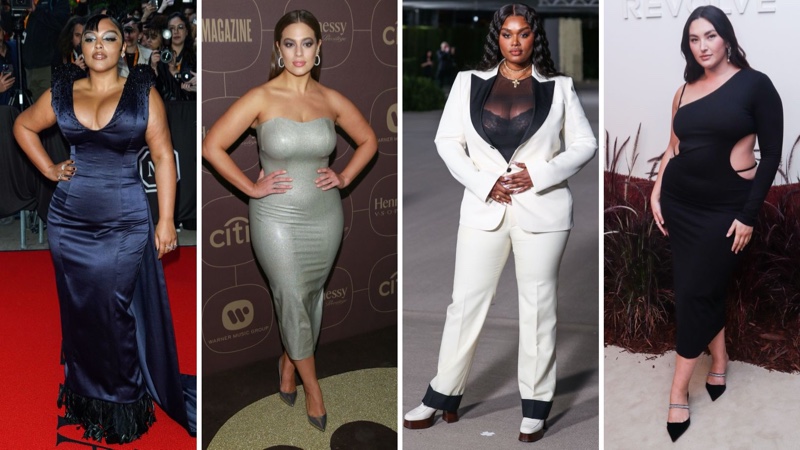Plus Size Models – Redefining Beauty in the Fashion Industry
Plus size models have revolutionized the fashion industry by challenging outdated beauty ideals and promoting body diversity. For decades, runways and campaigns primarily featured extremely slim figures, leaving many people feeling excluded from the world of fashion. However, in recent years, the rise of plus size representation has reshaped the industry, making it more inclusive and relatable.
This shift is not just a passing trend—it’s part of a cultural movement toward acceptance, self-love, and realistic beauty standards.
The Evolution of Plus Size Modeling
The concept of plus size modeling is not new, but its visibility and influence have grown significantly in the last two decades. Early pioneers like Emme and Mia Tyler in the 1990s paved the way, showing that beauty comes in many forms.
Today, plus size models are featured in high-profile campaigns, on magazine covers, and in major fashion shows. They represent a range of body shapes, sizes, and styles, proving that the industry has space for everyone.
Who Qualifies as a Plus Size Model?
In fashion terms, “plus size” generally refers to models who wear clothing sizes 12 and above (US sizing), though this can vary between brands and regions. Unlike the traditional modeling industry, where strict measurements are the norm, plus size modeling celebrates diversity in proportions, height, and curves.
The focus is on showcasing clothing for fuller figures while representing body positivity and confidence.
Famous Plus Size Models Making an Impact
Several plus size models have become household names, breaking barriers and inspiring millions:
-
Ashley Graham – One of the most recognized figures in plus size modeling, Ashley has graced the covers of Vogue, Sports Illustrated, and countless other publications.
-
Paloma Elsesser – Known for her striking features and work with high-fashion brands like Fendi and Versace.
-
Tess Holliday – A vocal advocate for self-love, she challenges stereotypes through her work and public presence.
-
Precious Lee – The first Black plus size model to appear in the Sports Illustrated Swimsuit Issue, she has become a runway regular.
These models have shown that beauty is not limited to one body type, and their influence continues to grow.
Why Plus Size Models Matter
The importance of plus size models goes beyond fashion shows and photo shoots. Their presence in media and advertising sends a powerful message: all bodies are worthy of representation.
This visibility can help:
-
Boost self-esteem in people who rarely see their body type in mainstream media.
-
Challenge harmful beauty standards that promote unhealthy body expectations.
-
Encourage diversity in fashion design, leading to better clothing options for all sizes.
Plus Size Models in High Fashion
For many years, high fashion resisted plus size representation, favoring extremely slim silhouettes. However, change is happening. Designers such as Christian Siriano, Chromat, and Savage X Fenty consistently feature plus size models in their runway shows.
Even luxury fashion houses are beginning to embrace size diversity, a sign that inclusivity is not just for commercial brands—it’s becoming part of the industry’s core values.
Social Media and the Rise of Body Positivity
Platforms like Instagram, TikTok, and YouTube have been instrumental in giving plus size models a direct connection to their audiences. Through unfiltered content, behind-the-scenes videos, and personal stories, these models can bypass traditional industry gatekeepers and build their own platforms.
This direct communication fosters authenticity and helps dismantle the idea that beauty has a single definition.
Challenges Plus Size Models Still Face
Despite progress, plus size models continue to face challenges:
-
Limited opportunities in certain high-fashion spaces.
-
Tokenism, where only one or two plus size models are included in a campaign.
-
Stereotyping that limits the types of clothing they are allowed to model.
Addressing these issues requires ongoing commitment from brands, agencies, and consumers.
Tips for Aspiring Plus Size Models
For those who dream of entering the modeling industry, here are some practical tips:
-
Build a strong portfolio – Showcase versatility with different styles and settings.
-
Work with inclusive agencies – Research agencies known for representing plus size talent.
-
Develop a personal brand – Use social media to share your personality, interests, and style.
-
Stay confident and persistent – The industry is evolving, but breaking in still requires determination.
FAQ – Plus Size Models
Q1: What size is considered plus size in modeling?
Typically US size 12 and above, though standards vary by brand and region.
Q2: Are plus size models only used in certain types of fashion?
No, they now appear in everything from swimwear campaigns to high-fashion runways.
Q3: Can plus size models have different heights?
Yes, unlike traditional modeling, there is more flexibility with height requirements.
Q4: How can I become a plus size model?
Start by building a portfolio, connecting with inclusive agencies, and using social media to showcase your work.
Q5: Are plus size models in demand?
Yes, demand is growing as brands embrace inclusivity and body diversity.
Final Thoughts
Plus size models have transformed fashion from an exclusive, narrow-minded industry into a space that increasingly values representation and authenticity. Their presence helps normalize diverse body shapes, inspiring millions to feel confident and seen.
While challenges remain, the progress made in recent years shows that change is possible when voices come together. Plus size models are not just trendsetters—they are change-makers, pushing fashion toward a more inclusive future for everyone.
